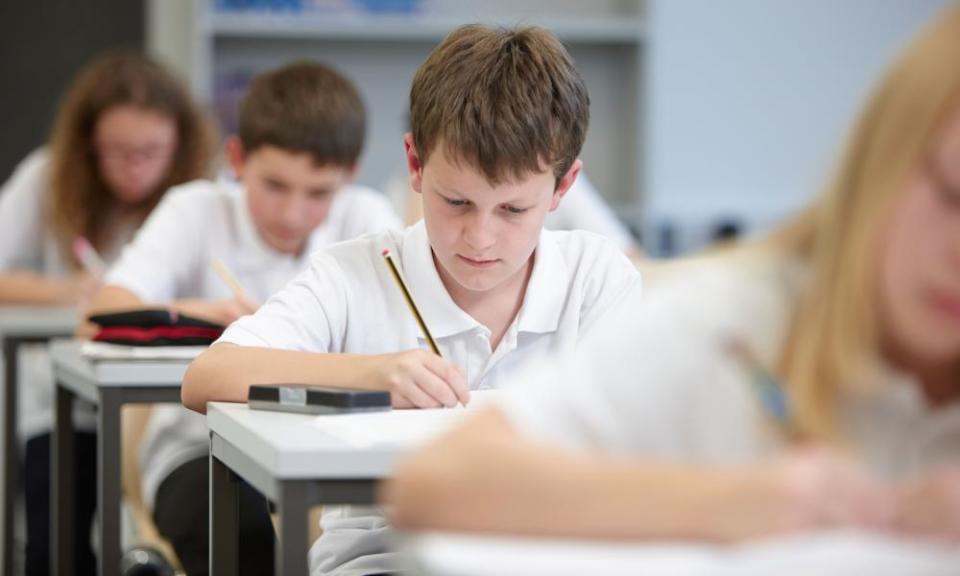Indigenous children among those making best gains in Naplan testing over decade

Australian primary school students have registered slow but statistically significant improvement in Naplan test scores over a decade, with the best gains made by Indigenous children and those with a language background other than English.
The results, to be released by the Australian curriculum assessment and reporting authority on Tuesday, show that since the national tests were introduced in 2008 average scores have gone up “significantly” in year 5 numeracy, years 3 and 5 reading and spelling, and year 3 grammar.
The authority’s chief executive, David de Carvalho, said it was “not the case, as some claim, that Naplan results show no improvement since the test was introduced”.
“It is more complex than that.”
Related: Naplan tests are vital: here are five reasons why | Peter Goss
But despite the improvement since tests began there were no statistically significant increases in average scores or the proportion of students above national minimum standards in any core competency in the past year.
Students in years 7 and 9 registered no improvement in reading since 2008 but there was an improvement in the proportion of year 9s above the national minimum standard in numeracy.
Since 2008 Indigenous students have improved in reading (years 3, 5 and 7), spelling (years 3 and 5), grammar and punctuation (years 3 and 7), numeracy (years 5 and 9), and writing (year 3). In the past year, Indigenous students also improved in years 3 and 9 writing.
De Carvalho said the cumulative gains made by Indigenous students since 2008 – at almost twice the rate of improvement for the general population – are “especially pleasing”.
Since 2008 there have also been significant cumulative gains in some domains and year levels for students with language background other than English, including reading (years 3, 5 and 7), grammar and punctuation (years 3 and 7), spelling (years 3 and 5), and numeracy (year 5).
When analysed by gender, females have improved in reading (years 3 and 5), spelling (year 5), grammar and punctuation (year 3), and numeracy (year 5) since 2008. Males improved in those areas and year 3 spelling.
The shadow education minister, Tanya Plibersek, accused the Coalition of “doing nothing” to improve education results, citing low marks for university students to get into teaching degrees and “schools … starved of the support they need”.
The education minister, Dan Tehan, said the government “continues to back Naplan because our community deserves to know how our students and schools are performing”.
He said the results shows the need for more work on the fundamentals of literacy and numeracy, pointing to government reforms including a review of the curriculum, making phonics mandatory for teachers and setting up a national evidence institute on best teaching practice.
The Naplan testing regime has been criticised by the Australian Education Union and several state and territory education ministers, who initiated a review in 2018 after complaints it encouraged teachers to “teach to the test”.
The botched rollout of online testing in 2019 added to concerns, with Western Australia suggesting it may refuse to shift to online.
In November the interim report of the Naplan review identified deficiencies including that questions were either too easy or too difficult to give meaningful data, the stakes were too high and that the test had the potential to narrow the curriculum to expected test content. The final report is due by June.
In December, state and territory education ministers agreed that the focus of Naplan reporting would move from school averages to reporting on the gains made by students at the school.
The head of the New South Wales education department, Mark Scott, has suggested Naplan testing would be made “obsolete” with the shift to smaller, more individualised testing regimes, as proposed by the second Gonski review.

 Yahoo News
Yahoo News 